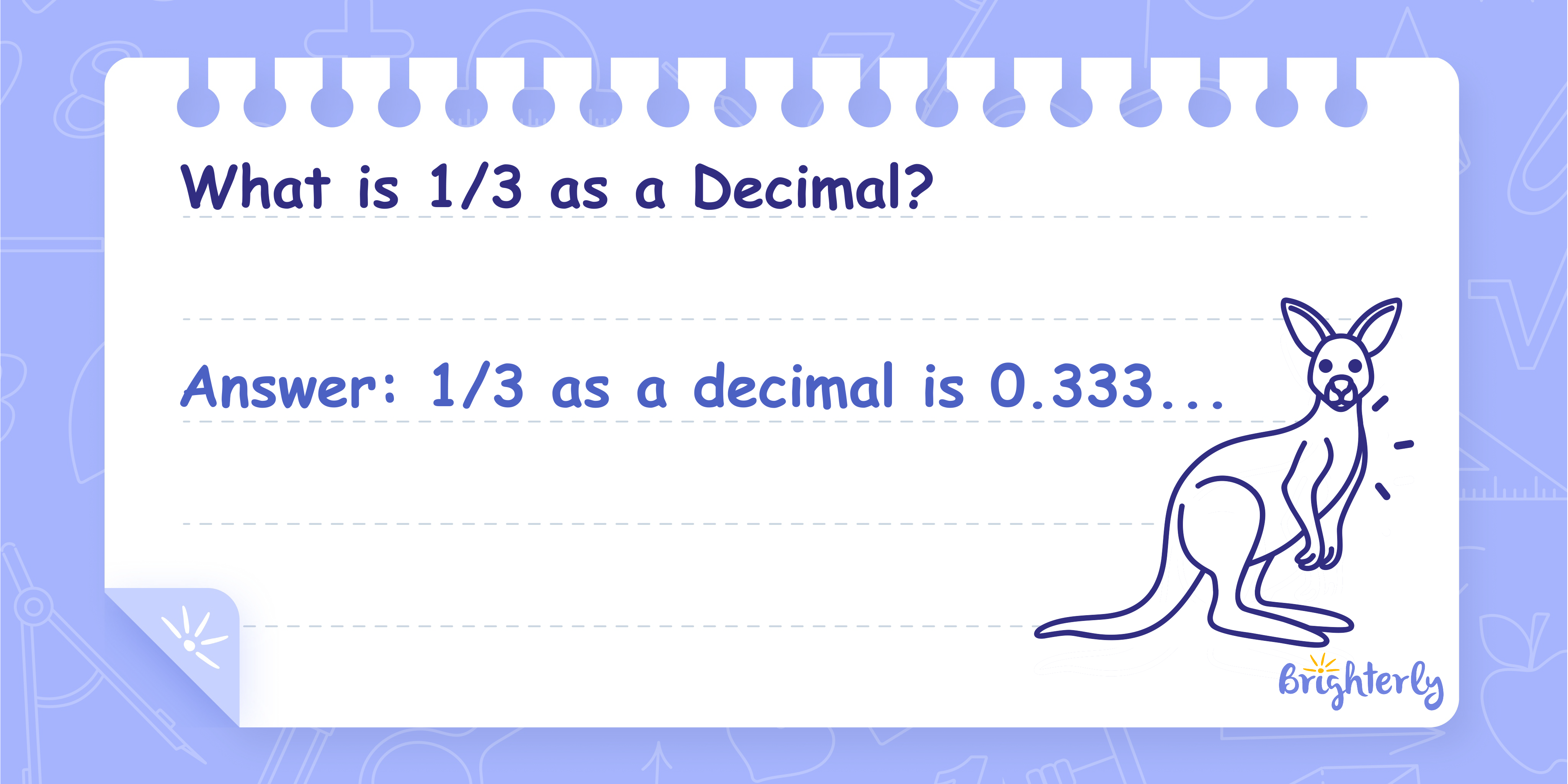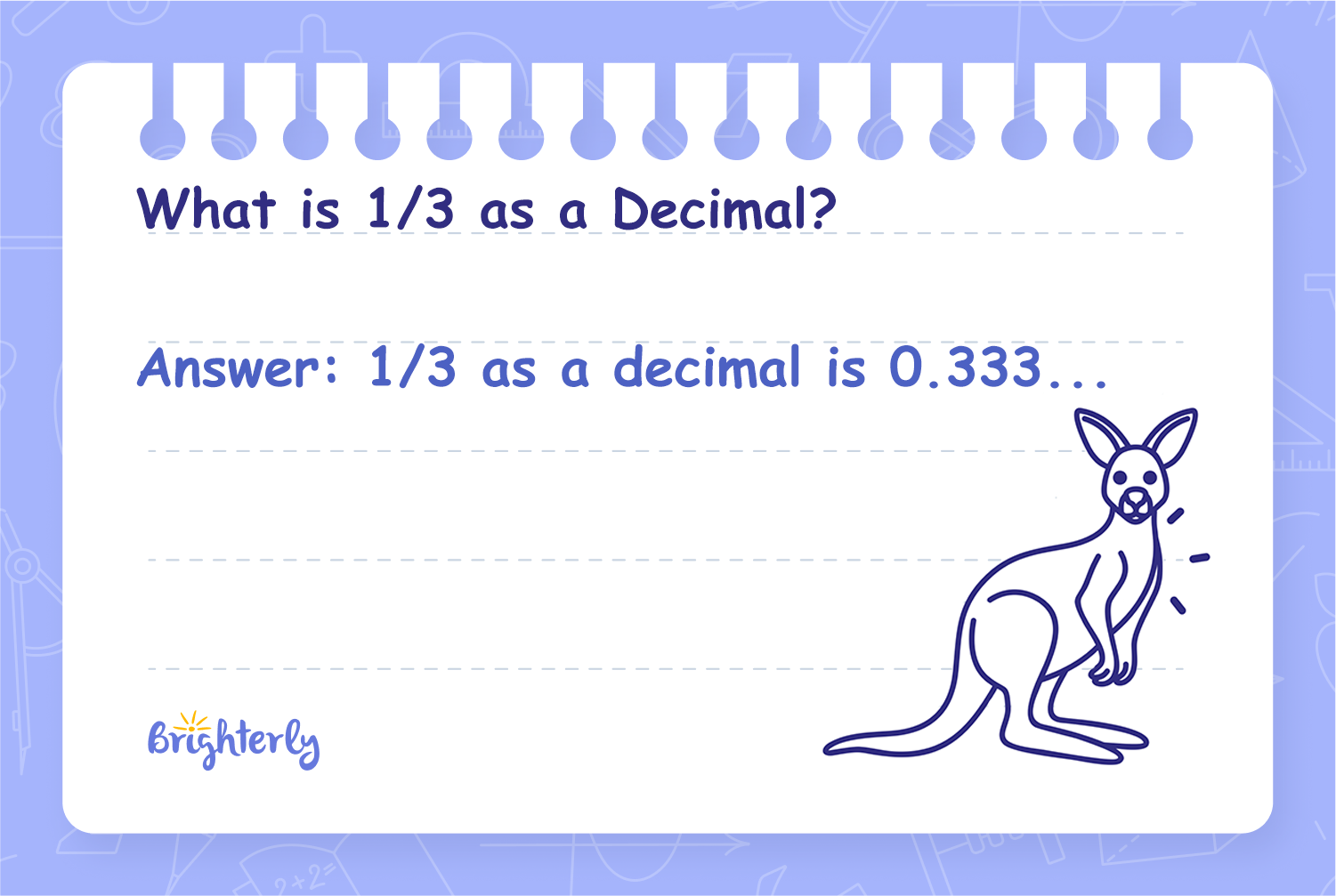
Reviewed by Maila Caliao
What is 1/3 as a Decimal?
Answer: 1/3 as a decimal is 0.333...
Converting the fraction 1/3 into a decimal is a common exercise in basic mathematics. This conversion helps in understanding the relationship between fractions and decimals, and demonstrates the concept of repeating (recurring) decimals, which are decimals with an infinite sequence of repeating digits.
Methods
Math Tutor Explanation Using the Division Method
To convert 1/3 to a decimal, divide the numerator (1) by the denominator (3). The result is a repeating decimal.
Step 1: Step 1: Divide 1 by 3
Step 2: Step 2: Notice that 3 does not go into 1, so add a decimal point and zeros to the dividend
Math Tutor Explanation Using Pattern Recognition
Recognize that dividing 1 by 3 results in a decimal where the digit 3 repeats indefinitely.
Step 1: Step 1: Recall that 1 divided by 3 is an example of a fraction resulting in a recurring decimal
Step 2: Step 2: Realize that the decimal will never terminate, and only the digit 3 repeats in the decimal expansion
Step 1:
Step 2:
Math Tutor suggests: More Fraction to Decimal Practice
Strengthen your skills converting fractions to decimals with these similar math exercises.
FAQ on Repeating Decimals and Fractions
Why does 1/3 as a decimal repeat forever?
Because 3 does not evenly divide into 1, the remainder repeats, causing an infinite loop of the same digit.
How do I write 0.333... using a mathematical symbol?
You can write it as 0.3̅, where the bar over the 3 indicates it repeats forever.
Is 0.333... exactly equal to 1/3?
Yes, 0.333... is exactly the same value as 1/3.
Do all fractions convert to repeating decimals?
No, only fractions with denominators that are not factors of 10 in their lowest terms become repeating decimals; others are terminating decimals.
How do I identify a repeating decimal when dividing?
If, during division, the same remainder begins to repeat, it means the decimal digits will also start repeating.


